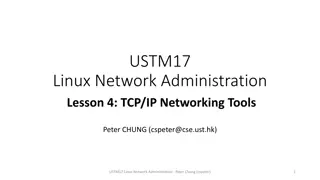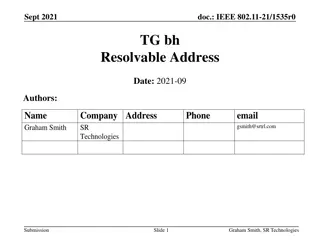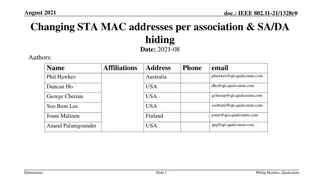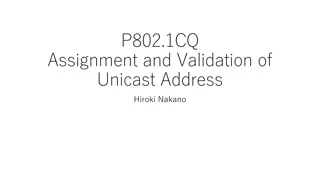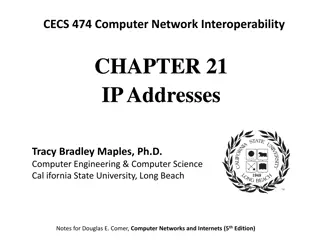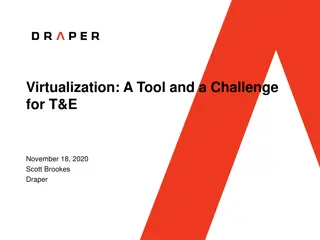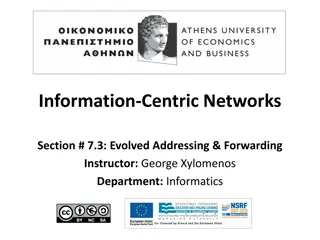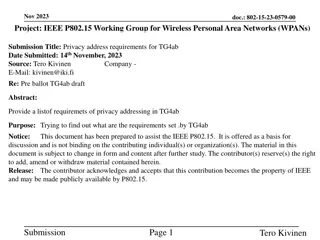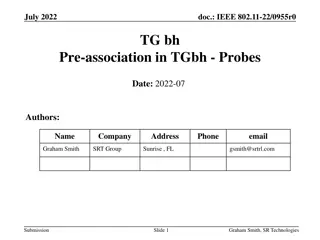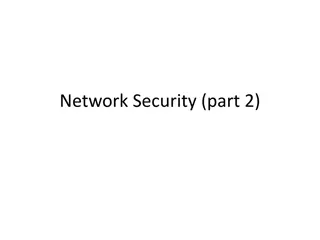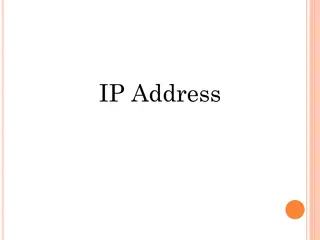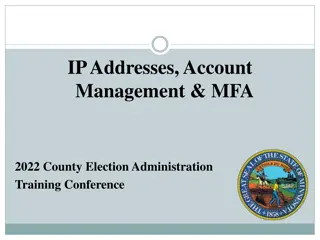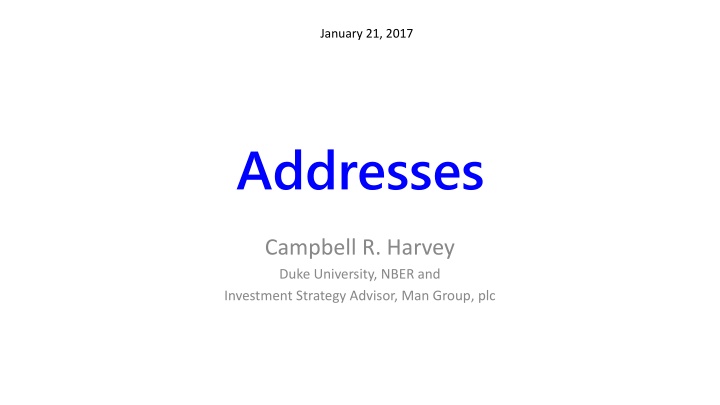
Bitcoin Address Generation Using ECDSA Algorithm
Learn how Bitcoin addresses are generated using the ECDSA algorithm, including steps such as key pair generation, SHA-256 hashing, RIPEMD-160 hashing, and base58 conversion. Explore the process in detail as explained by Campbell R. Harvey in 2017.
Uploaded on | 2 Views
Download Presentation

Please find below an Image/Link to download the presentation.
The content on the website is provided AS IS for your information and personal use only. It may not be sold, licensed, or shared on other websites without obtaining consent from the author. If you encounter any issues during the download, it is possible that the publisher has removed the file from their server.
You are allowed to download the files provided on this website for personal or commercial use, subject to the condition that they are used lawfully. All files are the property of their respective owners.
The content on the website is provided AS IS for your information and personal use only. It may not be sold, licensed, or shared on other websites without obtaining consent from the author.
E N D
Presentation Transcript
January 21, 2017 Addresses Campbell R. Harvey Duke University, NBER and Investment Strategy Advisor, Man Group, plc
Addresses Bitcoin uses Elliptic Curve Digital Signature Algorithm* (ECDSA) for signing transactions. I have additional material on EC encryption in a handout called Cryptography 101. Here are the steps. We first start with the ECDSA generating a private and public key. This is the key pair. You can sign transactions with the private key Anyone with your public key can verify the signature is valid The bitcoin address is linked to these keys Specifically, ECDSA sec256k1. See https://en.bitcoin.it/wiki/Secp256k1 Campbell R. Harvey 2017 2
Addresses Bitcoin addresses are like random numbers If two people have the same address, this is called a collision Given the current implementation, the probability of collision is miniscule https://en.bitcoin.it/wiki/Technical_background_of_version_1_Bitcoin_addresses Campbell R. Harvey 2017 3
Addresses 1. Start with private ECDSA key 18E14A7B6A307F426A94F8114701E7C8E774E7F9A47E2C2035DB29A206321725 2. Take public key generated with it* 0450863AD64A87AE8A2FE83C1AF1A8403CB53F53E486D8511DAD8A04887E5B23522CD470243453A299FA9E77237716103ABC11A1DF38855ED6F2EE187E9C582BA6 3. Perform SHA-256 on public key 600FFE422B4E00731A59557A5CCA46CC183944191006324A447BDB2D98D4B408 Campbell R. Harvey 2017 4 *65 bytes, 1 byte 0x04, 32 bytes corresponding to x-coordinate; 32 bytes for y coordinate
Addresses 4. Perform RIPEMD-160 hash on the result of SHA-256 010966776006953D5567439E5E39F86A0D273BEE 5. Add version number byte in front of RIPEMD-160 00010966776006953D5567439E5E39F86A0D273BEE 6. Perform SHA-256 on extended RIPEMD-160 445C7A8007A93D8733188288BB320A8FE2DEBD2AE1B47F0F50BC10BAE845C094 Campbell R. Harvey 2017 5
Addresses 7. Perform SHA-256 on the previous SHA-256 D61967F63C7DD183914A4AE452C9F6AD5D462CE3D277798075B107615C1A8A30 8. Take first 4 bytes of 2nd SHA-256 (address checksum) D61967F6 9. Add 4 checksum bytes to extended RIPEMD-160 in stage 5 (25 byte bitcoin address) 00010966776006953D5567439E5E39F86A0D273BEED61967F6 Campbell R. Harvey 2017 6
Addresses 10. Convert to base58 (upper and lower case letters, numbers, excluding 0,O,I,l) 16UwLL9Risc3QfPqBUvKofHmBQ7wMtjvM Voil . The bitcoin address. Campbell R. Harvey 2017 7
Addresses Campbell R. Harvey 2017 8
Addresses Campbell R. Harvey 2017 9
Additional resources Generate a private key and address: https://www.bitaddress.org/ http://bitcoin.stackexchange.com/questions/3041/what-is-a-130-hex- character-public-key https://bitcointalk.org/index.php?topic=78132.0 Campbell R. Harvey 2017 10


